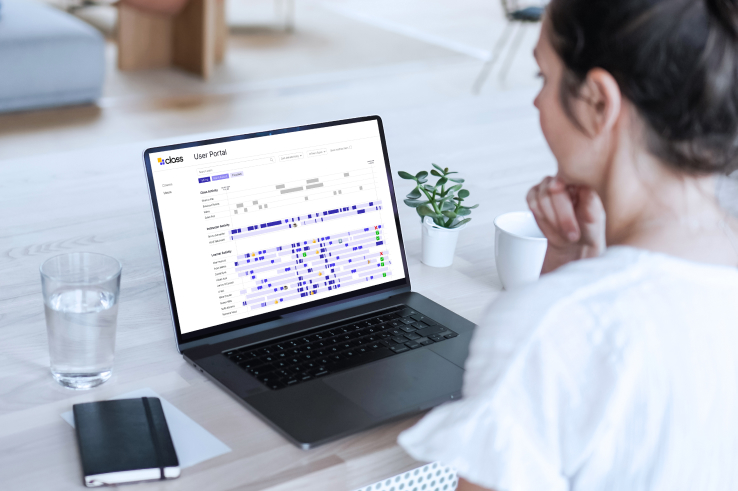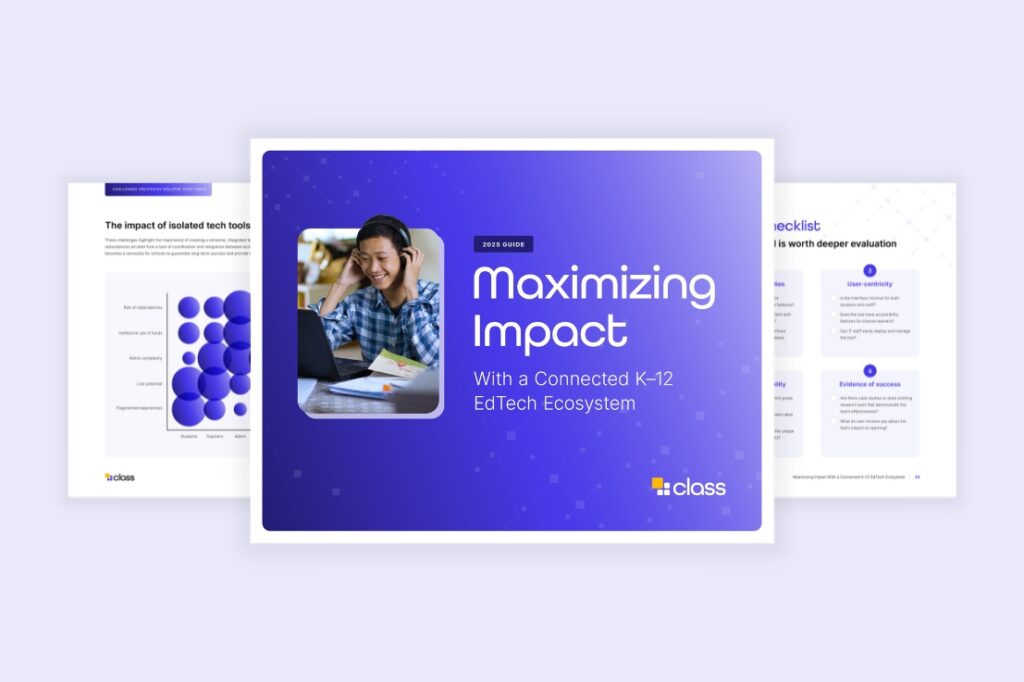2. Hardware to Make Online Learning Happen
While apps like Zoom have definitely been a gamechanger for creating a virtual classroom, hardware and classroom video conferencing equipment is equally important for online learning and is the key to maximizing virtual learning, notes Elie Reich, lead training specialist for ASU Prep Digital.
“Besides the obvious need for devices and Internet access for all, we’ve found that providing teachers with two monitors is a game-changer for remote learning,” says Reich. “With double monitors, the teacher can simultaneously view the students while maintaining sight of the assessment tools, content, analytics, etc., to help them make instructional decisions on the fly,” she says. “In addition, giving teachers multiple, simple cameras–and training to set up—can also help showcase various instructional activities.”
Curtis Forbes is founder of Forbes Music, a company that has been educating music students online since 2016. He says: “We’ve found that students and clients should consider investing in technology, where appropriate, to give the best experience possible. A good set of headphones can help eliminate distractions so students can stay focused on the class, and external audio devices will cut down on background noise to ensure students are able to send clean, crisp audio signals.”
When teaching classes like music, he says: “The use of technology to improve audio quality is an easy way for students to help their teachers help them, especially if the student is singing or playing an instrument.”

3. Virtual Classroom Technologies for Creation, Creativity and Engagement
“Our students have really benefited from tools like Padlet and Jamboard, both of which allow students to collaborate live online in a variety of ways, such as creating concept maps, post-it note comments, drawings, and more,” says Reich.
Padlet has been a go-to tool for virtual classrooms, says Reich, “because it is so easy for students to use for drawing, asking and answering questions, and providing comments.” It’s also been useful for engaging students and supporting social-emotional connections, she says.
Another virtual classroom tool used at ASU Prep Digital, Flipgrid, is a video collaboration tool that allows students to introduce themselves, react to learning content, or respond visually to peers in addition to written feedback, says Reich.
Anna Moss is the founder of Mind the Test. “My students absolutely adore learning through Kahoot and Quizizz, both in the classroom before and now at home,” she says. “I use them in every class as a form of formative assessment and an integral part of the learning process.” She shares a recent “teachable moment” that one of these tools made possible:
“I was teaching a small group class in a client’s home, and as usual, the class had migrated from the main ‘classroom’ area to the TV to play a challenging review Kahoot game. One particular question stumped everyone—we had not yet learned that particular grammar rule, and I wanted them to figure it out for themselves. When the correct answer appeared on the screen, everyone cried out indignantly—’What!? How is that right!?’ The only student to get it right piped up and explained the grammar rule. Every set of eyes was focused on him, every brain was fully engaged, and when he was finished, everyone knew the rule and how to apply it. And it was much more memorable—and fun—than it would have been had I stood at the front of the whiteboard and told it to them.”
The Future with Digital Classroom Technologies
While widespread school reopenings have happened, Cardenas says that “virtual and hybrid learning are very much here to stay and we anticipate that schools will continue to adapt and improve upon these models over the next couple of years.” Online classroom platforms are not leaving and classroom technologies in this digital age will only continue to grow at every level of education.
Moss agrees. “I hope that now that teachers, students, and parents are becoming more comfortable with online learning, these amazing resources continue to be used when learning migrates back to the classroom,” she says.







